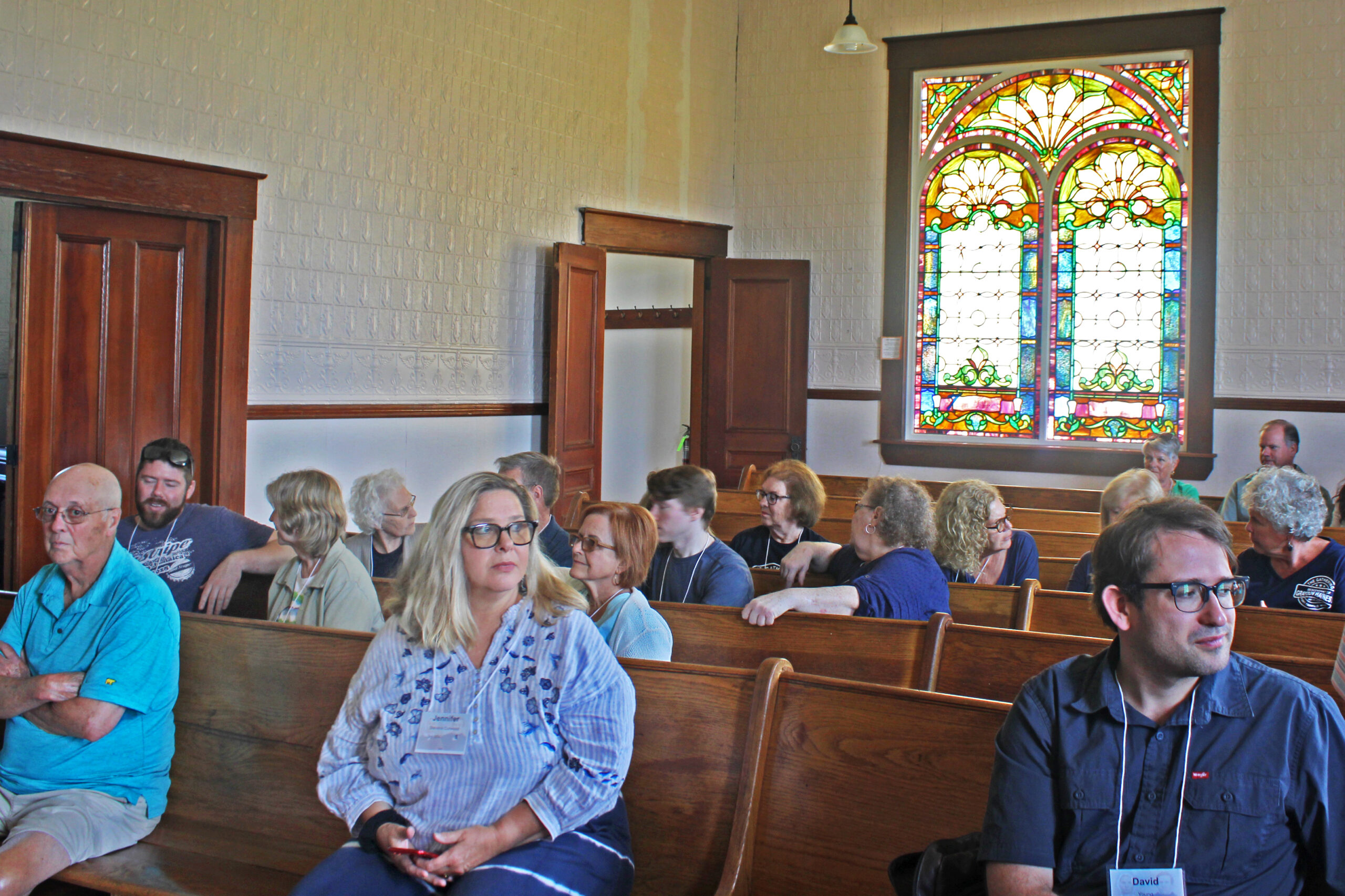
FORT FAIRFIELD, Maine — Nearly a hundred Haines descendants gathered Saturday to honor one of Fort Fairfield’s pioneer families.
J. Wingate and Mary (Briggs) Haines settled in the Maple Grove area of the town in 1844. The couple pioneered not only a settlement, but a religion and an agricultural tradition that has endured for 180 years.
They were the area’s first Quakers and, along with other families that joined them, built the first local Society of Friends Church around 1860. Located on Route 1A, the historic building still stands and is Fort Fairfield’s oldest existing church. It is widely believed to have been a waypoint on the Underground Railroad.
A farmer and cattleman, Haines also started what is now the Northern Maine Agricultural Fair in 1851 and served as its first president.
Part of Saturday’s celebration was a gathering at the Friends Church. More than 50 people packed the small sanctuary to hear a talk on Quaker tradition by Steve Curwood, practicing Quaker, journalist and host of National Public Radio’s “Living on Earth,” who is married to Jennifer Stevens Curwood, a great-great granddaughter of the Fort Fairfield couple.
The Curwood family has visited Aroostook several times.
“I have to say that this is one of the most honest places I’ve been. There’s a lot of integrity here,” he said. “There’s community. People really help each other here.”

Those qualities are among those inherent in Quakerism, which uses the acronym SPICE to refer to its main principles of simplicity, peace, integrity, community and equality, he said.
The Society of Friends became known as Quakers actually as a derogatory nod to their trembling when under the Holy Spirit, Curwood said. Because of their anti-war stance, people jeered that they were trembling because they feared fighting. The name stuck.
At the time of J. Wingate and Mary Haines’ involvement, changes were afoot in the country and Quakers were at the forefront, taking radical stances for that time, Curwood said. They embraced temperance, considered women equal to men, and were anti-war and anti-slavery.
Their desire to help people who were enslaved find freedom led many Friends to involvement in the Underground Railroad, he said. Because of Fort Fairfield’s proximity to Canada, it’s likely that at least some escapees passed through the town, though little documentation exists of that.
The historic church has long had a connection to the Underground Railroad. Tradition has it that underneath the floorboards exists a place where those escaping slavery could hide from authorities.
Contractors reported they had found the possible hiding place while restoring the church in 1995, the BDN reported in 2013. Workers had ripped up the stage at the front of the church and found boards, dating from the church’s 1906 stained-glass window, covering an old trapdoor.
The space was large enough so people could have lain down in it, and a horse shed on the property might also have hidden people, according to a 2008 article by Harrison Roper of Houlton in the Friends Journal.
“This [church] stands as a beacon, really,” Curwood said. “Whatever the Haines clan brought here has endured in spirit, somehow, in this place.”
Presbyterian Rev. Charles Stanton acquired the church in 1972, and in 1995 sold the building to the Frontier Heritage Society for a dollar, said Jim Everett, the group’s president. The building is on the National Register of Historic Places.
The society maintains the structure, which is open for tours and occasional presentations. Society of Friends members from nearby Perth-Andover, New Brunswick, hold some meetings there, Everett said.

“It’s awesome to see these relatives I have known of, but not met,” said Peter McKenney of Cumberland Foreside. “This gathering of our relatives is very motivating. It’s inspiring.”
McKenney, a third great-grandchild of J. Wingate and Mary Haines, actually organized the gathering, said his wife, Susan McKenney — thanks to a fallen-down sign in the old family cemetery.
Two years ago, the couple were visiting the area and passed by the Haines family’s cemetery, located just a bit north of the church on Route 1A. McKenney’s mother had had a wooden sign made, and it had fallen down.
Peter started contacting relatives, and together they raised enough money to have a granite sign made for the cemetery. But they discovered much more: their common connections and the desire to celebrate their family’s origins.
Rommy Haines of Fort Fairfield and his daughter, Jasmine Jaye of Eastport, also helped organize. Jaye created a website several months ago for the family.
Saturday’s gathering included socializing at the VFW Hall, a presentation at the family cemetery and a banquet.
Correction: A previous version of this story misstated Jennifer Stevens Curwood’s name.







